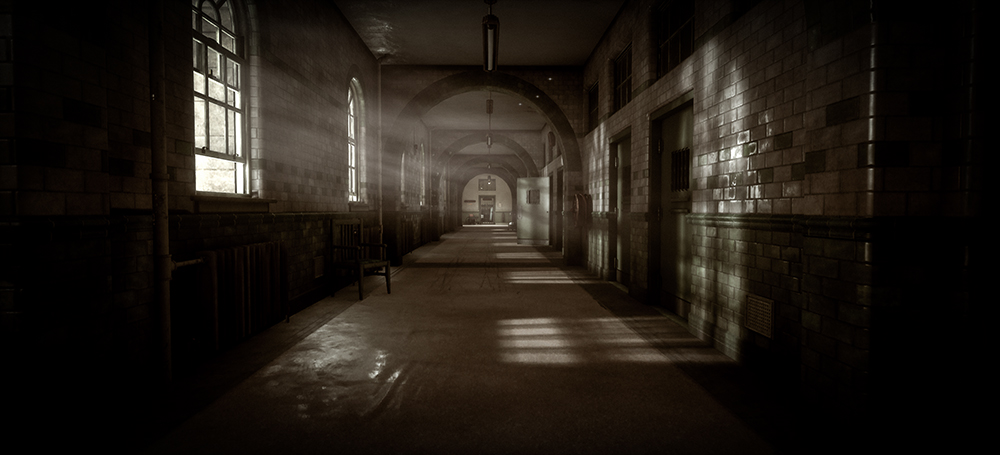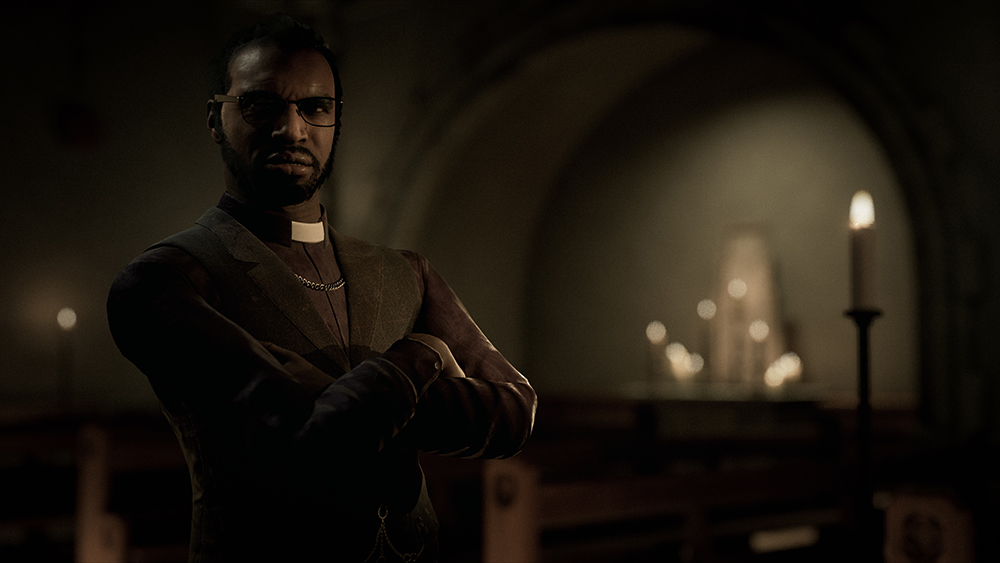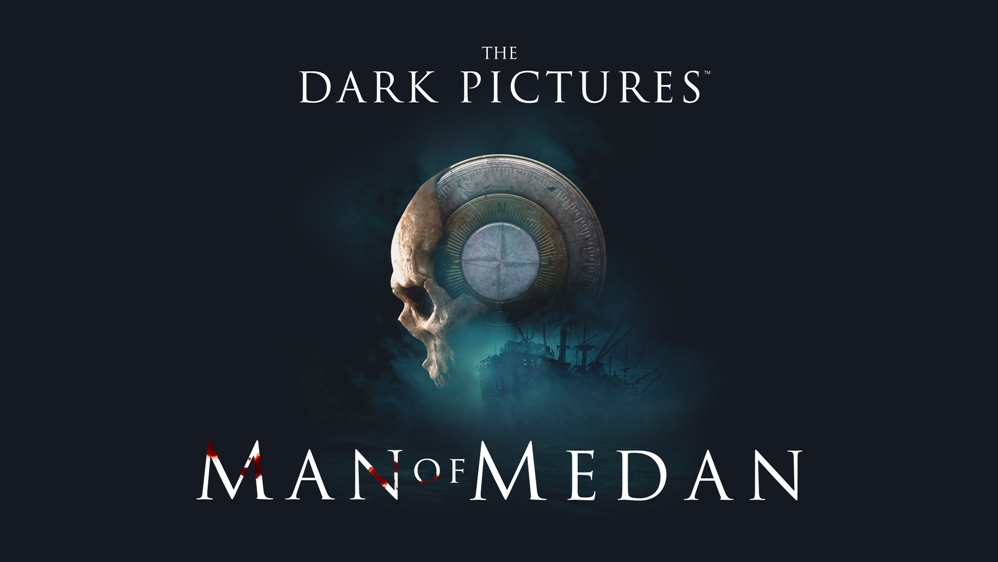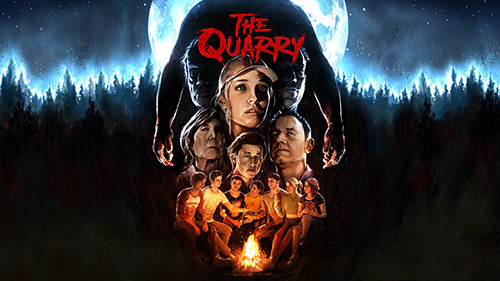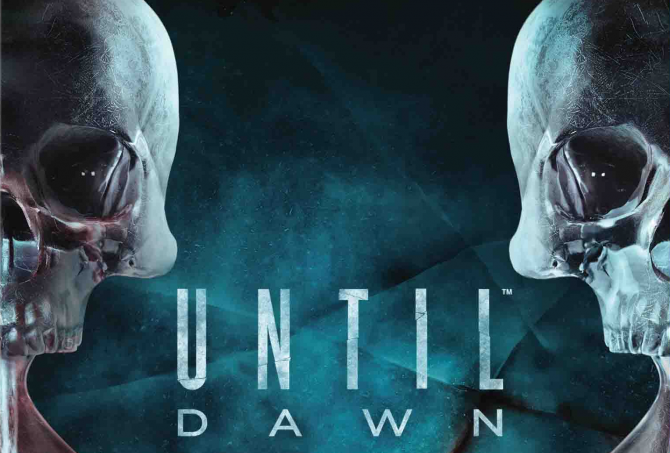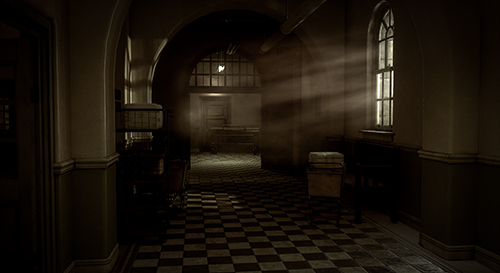
Supermassive Games get a lot of respect from me, despite an early blunder with Doctor Who: The Eternity Clock, because this generation they seem to have their head around the ‘interactive movie’ genre of games. There’s a low-res, frustrating family tree that you can trace back from early attempts at choose-your-own adventure FMV games like Phantasmagoria, to David Cage’s mixed attempts with Quantic Dream. Until Dawn, despite any issues I had with it regarding replayability, was maybe the first game I’ve played to really nail the concept. This was partly due to smart, movie mash-up and genre-flipping writing, partly due to some great performances, and partly due to the sense of your choices shaping the cinematic journey as you go along, even if this was exaggerated by marketing.
The Inpatient is Supermassive’s second PlayStation VR title, and a prequel to 2015’s Until Dawn, set 60 years before its events. Taking Supermassive’s knack for cinematic storytelling and applying it to a surreal VR horror title sounds like a recipe for underwear-annhilating success, which is why it’s disappointing that The Inpatient is so thoroughly uneven.
Awakening to find yourself in Blackwood Pines Sanatorium under the care of Dr. Bragg, the game literally throws you into the same position as the ‘inpatient’ character you assume, who has amnesia and knows nothing about their situation. Placing the player into such a confronting and powerless environment has a lot of potential, especially using VR, although the game soon makes it clear it’s much more interested in spooky jump scares and supernatural clanging.
The Inpatient becomes a game of two halves – the first of which is based around the novel, if limited idea, of trapping you and another patient inside a cell after a disaster occurs at the Sanatorium outside. Left alone for days and dying of starvation, with only each other and the terrifying screams outside for company, some of The Inpatient’s more interesting scenes happen here. Periods of lucidity in your room are interspersed with dream sequences, which contain most of the the requisite jump scares and ghostly antics, and which also offer you choices to influence the game’s Butterfly Effect mechanic.
Much like Until Dawn, The Inpatient boasts the ‘Butterfly Effect’ mechanic, which purports to branch out to different storylines and endings based on your decisions throughout the game. While there still isn’t much variation in the game’s events, your decisions do affect who lives and dies, and which one of a few different outcomes you face. I played through the game twice, which didn’t take as long as you might think thanks to its short length, and while varying my decisions did end up leading me down slightly alternate paths, I don’t think I could maintain interest for another few run-throughs. However, in a cool technical feature, decisions and dialogue choices hover in your field of view, silhouetted by the emotion they’ll convey, and using the PlayStation VR’s microphone you can actually speak out loud to respond, with surprising accuracy.
Unfortunately, to get to these endings, you have to slog through the game’s second half. Without giving too much away, it involves more traversal and exploration of dark, dingy and largely empty environments, following characters very slowly using the sluggish controls. Your character’s walking pace is so slow, it feels like the decision was made solely to pad out the 2-3 hour experience. Strafing or stepping backwards also sometimes seems to work and sometimes doesn’t, and while using the DualShock 4’s motion tracking to interact with objects is nice, it can sometimes be unresponsive. Using two PlayStation Move controllers is definitely the way to go, even if the collision detection on them can seem buggy, and your arms can stretch in some unintentionally unnatural ways.
However, despite these problems there are things to be positive about in The Inpatient. Some of the performances are actually pretty engaging, especially Dr. Bragg and your cellmate, Gordon (his counterpart, Anna, if you choose to play as a female character doesn’t quite match up, sadly). The narrative does explore events mentioned in Until Dawn, which always did seem like an interesting story to explore. The only issue is to get the most out of this game, you should already have played that game, and if you had then there isn’t much of a mystery about what’s going on. That leaves the other mystery as to who your character is and how they fit into the puzzle, the answer to which becomes convoluted to an extent that it loses relevance.
There’s some interesting backstory here to uncover for real Until Dawn fans, but even for them it won’t contain much they didn’t already know. The Inpatient toys with potentially provocative and horrifying ideas, and it works when it’s at its most tense and uncomfortable. However, The Inpatient isn’t really worth the current AU $54.95 asking price, but the unique situations it places the player in, quite literally through virtual reality, are worth a look-see for the curious when the game inevitably goes on sale. If you’re after a proper horror game in VR, you still can’t really go past the far more fleshed-out Resident Evil VII, which offers not only scares but rewarding gameplay and exploration as well.
- Effective tension-building in its early stages - Good looking visuals in VR - Some good performances
- Sluggish controls - Limited replay value, despite butterfly effect - Uneven, and the second half drags

